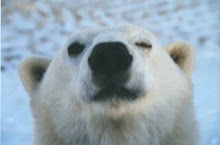The tiger, I had come to the conclusion, was a mythical heast.
Years of tramping up to its supposed haunt on days spent peering out of car windows, open jeeps, elephant backs and machans on freezing mornings, and even on foot (quite illegally of course) for four days and nights at Ranthambore (where you are supposed to trip on a tiger if you don’t watch out and the beasts answer to their names), and not a sight. Cheetals aplenty, sambars, nilgais, barasingas and blackbucks, wild boars straight from the pages of Asterris, all these were there. The tuskers in Corbett all knew me by sight and posed for photographs, but of the larger camivores, not a sight. That is, if you don’t consider the possible ear among the elephant grass, which could have beerraleaf or the thing like an ant near the horizon which disappears by the time the binocs are focussed or the sudden movement just beyond you when your co-passenger on the elephant or jeep screams ‘tiger oye’ and the mahout or guide glares at you.
Of course, there are signs in plenty. Pug marks dot the track as if a government sponsored canine rally it just over, droppings indicate severe epidemics of gas-tro-enteritis among the carnivores, left over kills hunt at orgies in open air, and the roars at night that could be ‘Him’ or a misfiring Maruti.
At Corbett and Sunderbans, Sariska and Ranthambore, Gorumara and Jaldapara, Periar and Rajaji, I drew similar blanks..
I was baffled by all this till the film ‘Electric Moon’ provided a clue. Thereafter I went on keeping a sharp eye for forest jeeps with pug mark tracks, hidden microphones in elephant grass and butcher’s vans making delivery runs.
All this till Kanha happened. Falling for the spiel about kipling country from the attractive lady at the tourist office. We booked into the jungle lodge, at Kanha Tiger Reserve and took a slow train to Jabalpur. An interminable wait at the bus stop for the lone bus only to be told it won’t make an appearance, and exorbitant and jarning marathon taxi ride, a jungle lodge disclaiming all knowledge of reservations, the power cuts and candle-lit dal roti, did not augur well for the trip.
The early morning jeep safari at Rs. 8 a km, our eyes firmly giued to the audiometer and the mind busy calculating the budget and cash balance (credit cards not having penetrated kipling country yet) kept our attention away from cheetal, pug marks, droppings, etal – till the second day.
It began well with a bull buffalo threatening us for photographing its cows, a barasingha with a bureaucratic reluctance to move and mon pug marks when finally hi-tech piped in. A wireless message to the effect that a big cat had been spotted on a kill made us rush to the nearest track and carry on from there on elephant back.
Suddenly, six feet from us, a sight that made all the trouble worthwhile – the Real Thing. A pair of tigers on a kill. Dissatisfied with the short glimpse after a long wait reminiscent of a ‘darshan’ of a deity and tipped off by a ranger that they will return to the kill, we returned the next day. For a handsome tip, our h=mahout let us stare uninterrupted for almost one hour at the gruesome sight of the feast.
Finally, we kill , or young buffalo was almost exhausted and a very brief battle for the spoils ensued, accompanied by roar, trumpeting elephants and screaming tourists.
The sudden commotion made me drop my camera and the unforgettable sight was captured only in the mind’s eye in audiovisual splendour. For the roar of the free beast of six feet is something you cannot ever forget. The creature in the wild appears to be a completely different species from the sad specimens we see in our zoos and circuses.



